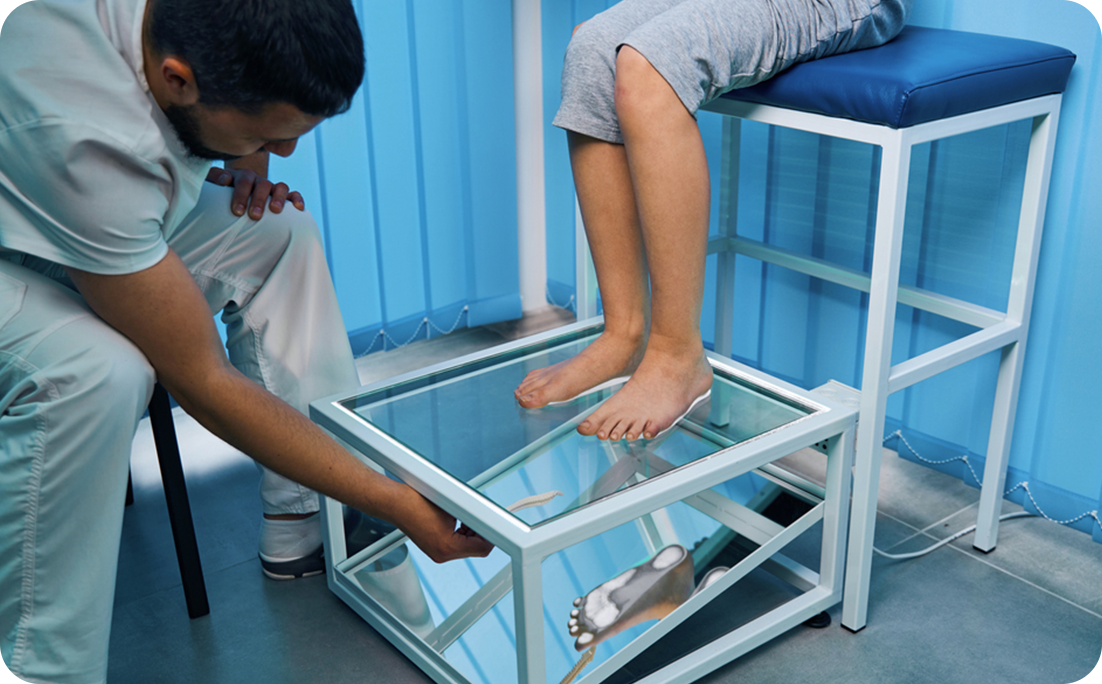Pediatric foot deformity refers to a variety of diseases that can affect the bones, tendons, and muscles of the foot. The most common conditions treated are cavus foot, tarsal coalition, clubfoot, accessory navicular, and juvenile bunion.
Treatment for foot abnormalities in youngsters can differ greatly from that required in adults. Fortunately, pediatric orthopedists who specialize in this field can apply a variety of non-operative and operative techniques specifically designed to address children's unique needs, including a focus on preserving the integrity of the growth plate, allowing the foot to continue growing and developing.
- Club foot is a condition where the foot twists out of position, typically inward at the ankle. It occurs when the tendons that connect muscles to bones are too short. In children, this is frequently a congenital foot malformation caused by either hereditary risk factors or a confined position in the womb. The syndrome can also be acquired later in life, with the reason being nerve or tendon damage, such as after an accident or surgery.
- Vertical Talus is a condition where the talus bone, located between the heel and lower leg, forms incorrectly. This leads the other bones of the foot to line up wrongly, resulting in the front of the foot pointing upward and the bottom of the foot being stiff and without arch. Sometimes the bottom of the foot bends outwards.
- Tarsal Coalition: When two or more of the seven tarsal bones at the back of the foot fuse together, the hindfoot can become stiff and unpleasant. While this issue normally develops before birth, it is often not noticeable until early adolescence.
- Polydactyly refers to having extra toes in the foot, which can be fully or partially formed. It is a frequent congenital abnormality of the foot.
- Macrodactyly, or oversized toes, is caused by bone and soft tissue expansion. The larger toe may develop at the same rate as normal-sized toes or faster than the other toes.
- Cleft foot is caused when the foot does not grow normally in the womb, resulting in missing toes, a V-shaped cleft (split) in the foot, and other deformities.
Treatment
The various options include:
- Conservative management with serial plaster casting techniques
- Orthopedic appliances
- Modified footwear and splints
In some cases Surgical soft tissue releases and tendon surgeries are required to treat the problem along with bone osteotomies.
In a few case special orthopedic implants like illizarov rings and JESS fixators may be applied for some time to correct the deformity.
Case Study By

Dr Nishant Soni
(MBBS, MS-Ortho)
Experience
Hand & Reconstructive
Micro Surgeon with 13 yrs
as specialist
Work in Stats till 2023
5000+ Carpal Tunnel Surgery
10010+ Hand Fractures
3000+ Wrist Surgeries
40000+ Happy Patients
Associations
Medanta MedCity
SCI International Hospital
Medanta MedCity
SCI International Hospital
Read More


